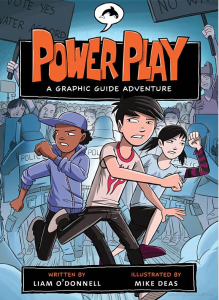You know you’ve stumbled into something relatively fresh when you’re quoted on corante’s many 2 many social software blog (it’s not as cool as having billy bragg drop by your blog, but I just had to blow my own trumpet.)
It all started when I stumbled onto Fiona Romeo’s post about her Etech presentation on Social Software for Children. It’s a very interesting look at how we can build online social networks for kids in a safe a responsible manner.

Getting young kids online and working with computers is an essential element of a 21st education, but it presents some interesting safety issues.
As a new immigrant to social networks, I’ve quickly seen their potential and their danger. As an adult, I feel pretty nervous about the amount of information I’ve disclosed about myself in the past two months on sites like this one and this one. I can’t imagine being the parent of a child who engages in online activities. And yet I think kids can benefit really benefit from this stuff. But there is much work to be done to make these new environments safe.
Today, we’re in the wild west of social software. Inside these communities, there are no guidelines for what is acceptable and people stake out their territory regardless of how insulting their mandate or dubious their intentions. Compared to the internet, social networks are tiny and it isn’t always possible to ignore those who hold crimminal views. But we’ve never discarded a new technology simply because of the devious uses it can be put to. As the communities grow and become more mainstream, safeguards and standards will be built and applied, like the ones applied to webpages.
Fiona Romeo, a developer for BBC interactive is interested in giving a place to kids to learn, share and express themselves. Ross Mayfield recently talked about how his 7 year old daughter blogs (although to an audience of one, for privacy reasons.) These are good examples of the logical way to introduce this technology to a young mind, to allow them to play with it within a controlled environment.
There are several interesting models for social software for kids today. I’m never a big fan of Disney and I view everything they do with much skepticism. But so far I’m impressed with ToonTown, their online community that has kids around the world engage in one big, pie-throwing, cartoon-creating MMORG. They’ve worked hard to redefine the format to encourage teamwork and communication between members, but it’s all fun and games and not much beyond that.
For educational merit, the best network I’ve seen so far is Oracle’s Think.com. It’s open only to schools, requiring them to go through a lengthy sign up process. This ensures the safety of the members and the legitimacy of the webpages and communities that can be created. Inside, kids can create their own webpages, much like blogs, message kids from other schools around the world and collaborate on projects together. Parents too, can access the pages and have a look at what their child is creating and who they are talking too.

Already there are many discussions about applying Social Network Software to the workplace. Dina Mehta draws upon her experience at Ryze and Orkut to develop networks for clients. Richard MacManus favours a wiki approach to creating these networks. Regardless of what software is used, I believe the collaborative elements of social networking software will find its way into the workplace of tomorrow, just as email has today.
Nothing will replace good ol’ fashion book learning, but a child who is introduced to the multi-tasking concepts that online communities can offer will definitely feel at home in the workplace of the future.
Now we just have get the governments to cough up the dough to get more computers into the schools. But that is another story . . .




















